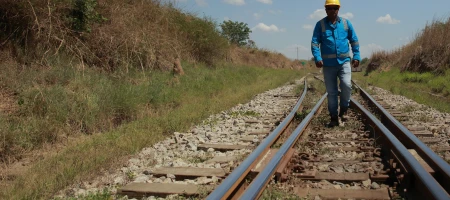
Towards a just energy transition - Experiences from the Netherlands
Certainly, when we talk about a just energy transition, we are referring to a scenario where the value of the worker in the fossil energy sector does not disappear but is transformed and redesign according to a market diversification. The energy transition in the Netherlands is characterized by being an alternating process that has varied according to the characteristics of the international scenario and the relationship of the Netherlands with its natural resources and the environment. If we approach it from a socio-economic perspective, the role of the union movement has been fundamental for these transitions to take place justly with workers in the mining sector.
First Decarbonisation Phase
The first transition occurred during the 1960s, when the Netherlands was 85% dependent on coal for energy consumption in its regions. All Dutch coal mines were located in the province of Limburg in the south of the Netherlands. The mines were an important source of employment and also attracted people from the rest of the country. As the region was mainly Catholic at the time religious unions were the ones who stood out mostly during this period: the Catholic blue and white collar unions were the ones that stood out for the workers and employees..
In December 1965, the Social Democratic Minister of Economic Affairs Den Uyl, launched an agenda for the closure of coal mines; The closure was proposed as a collective process directed by the State. It contained recovery perspectives for the region and guaranteed a gradual closure without a stipulated date.
This plan, combined with NAM ( Shell and Standard Oil Company -also known as Esso and now Exxon- joint venture) discovering Europe's largest natural gas field in the Netherlands, resulted in the importance of coal being displaced by that of natural gas in the domestic market.
Faced with this scenario, the Dutch State Mining Directorate DSM redirected its perspective towards this source of energy, while the coal mine unions focused their concerns on the extremely low wages - less than the minimum wage in the country - and not on the increased job rate due to the closure of mines.
However, they quickly realized that restructuring the energy system without a job alternative seemed to be a common option among European governments, when workers in Belgium staged massive protests demanding a just transition. Thus, the main trade unions in Limburg organized to demand solutions to unemployment; Fortunately, the Dutch State Mining Directorate and the trade union had a history of dialogue that set a precedent for reaching an agreement on adaptation to new Jobs.
First, the workers accepted the closure of the mines only if the government secured alternative jobs. Coal owners might have an incentive to continue mining until marginal cost equaled income, but labor had to benefit from an earlier subsidized outlet; before the profits evaporated. Second, a re-industrialisation department was created in the direction of the Dutch State Mines. This became a service institution for external investors, creating a fund of easily financed projects. In contact with potential employers, the workers were grouped into packages of young and old, suitable and less suitable. Third, age discrimination became an important feature of job reassignment, as workers of different ages and skill levels required different approaches, this created a feeling of rejection and lack of appreciation in older workers, for, the unions argued the need for a program that took into account psychological aspects and social support of unión colleaguesand not only focused on the creation of funds and early retirement.
Over time, the disappearance of coal mining caused an oversimplification of the causes of the transition, for example, the claim that well closures were economically unavoidable.
Undoubtedly, the crisis in the supply of steel and coal, the fall in their world prices in 1958 and 1959, made mining less competitive and unprofitable in the new European market.
Transition process
A second transition: Back to coal
Although coal consumption was minimal in the mid-1970s, it didn't take too long to become essential again. The resurgence occurred in the transformation sector, where coal was turned into electricity. With affordable oil prices and high expectations for nuclear power, a decision was made in the 1960s to consume the newly discovered riches of natural gas as quickly as possible.
The oil crisis in the same decade made it clear that the Dutch energy system was vulnerable and that the value of domestic natural gas was higher than expected. The energy crises had two important impacts; First, the hasty extraction policy was revised in favor of a longer-term extraction policy. Second, the oil crisis had revealed the Netherlands' dependence on a few suppliers. Therefore, diversification of suppliers and resources was encouraged.
This diversification led to a renewed interest in coal. Two mines were still active. In the wake of the oil crisis, experts and later policymakers, began to argue that the share of coal and nuclear power in the energy mix should increase, ensuring that oil and natural gas consumption would have to be reserved for efficient use.
In this way, the investigations were directed to the use of coal as an energy source. Coal gas was efficient because it matched a perceived Dutch competitive advantage: its natural gas pipeline infrastructure.
Current Energy Transition: Towards a just transformation
As a trading country, until 2015 the Netherlands had a great interest in coal. The end of national production implied a change in trade, Rotterdam and Amsterdam became the new centers of the coal sector. Tonnage handled had increased rapidly since the mid-1970s. Ports benefited from the general decline in coal mining in Europe and from new coal-fired power plants outside the country. On the other hand, the Netherlands is in a favorable territory, both Rotterdam and Amsterdam had a tradition in handling this type of cargo and coal was seen as "strategic".
As a trading country, until 2015 the Netherlands had a considerable interest in coal. The end of national production implied a change in trade, Rotterdam and Amsterdam became the new centers of the coal sector. Tonnage handled had increased rapidly since the mid-1970s. Ports benefited from the general decline in coal mining in Europe and from new coal-fired power plants outside the country. On the other hand, the Netherlands is in a favorable territory, both Rotterdam and Amsterdam had a tradition in handling this type of freight and coal was seen as "strategic".
Currently, Rotterdam and Amsterdam remain the first and second largest coal ports in Europe. Despite this, they face a difficult "fossil dilemma", since coal does not adapt well to the environment, becoming a factor of change because the combustion of this material is an important source of CO2 pollution.
After the signing of the Paris Agreement, this country has been concerned with reducing its carbon dioxide emissions as much as possible in order to limit the increase in global temperature to 1.5 ° C on the date stipulated in the Agreement.
Although their initiatives seem to be in line with the climatic urgency, with the creation of a law in December 2019 that means achieving the closure of all coal-fired power plants in the country by 2030, the government has had to face lawsuits from coal power plants amounting to 1,000 million euros in compensation under the Energy Charter Treaty (ECT).
Finally, in the face of the adversities that the closure of the coal plants represents, how to carry out a just transition process has been a constant in the main unions of Dutch power plants such as the FNV, which was organized at a propitious moment when it was clear that the OBA and Hemweg plant were going to close.
After a process of political lobbying and pressure towards the respective authorities, combined with protests, they managed to get a just transition fund in the coal sector for 25 million euros for job transformation plans, training and early retirement. This fund represents a pilot program, as the union knows that many more transitions are to come in Dutch industry.
Apparently, the lesson that the energy transitions in the Netherlands leaves us is, above all, the importance that trade union organizations work to coordinate between authorities and dialogue with companies.

In the end, it is clear that a just transition benefits not only workers but the entire economy of a country that is aware of the importance of its employees
